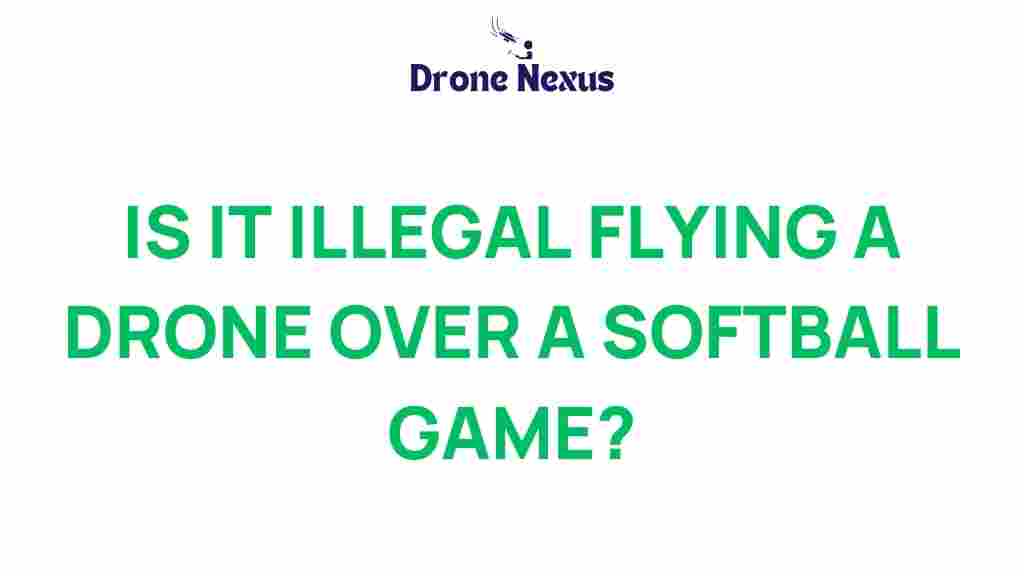Is It Illegal to Fly a Drone Over a Softball Game? Understanding Drone Laws
As the popularity of drones continues to rise, so too does the need to understand the legal implications surrounding their use. One common question that arises is whether it is illegal to fly a drone over a softball game. This article delves into the intricacies of drone laws, providing clarity on where and how you can operate a drone, especially in areas with crowds, such as sports events.
Understanding Drone Laws
Drone laws vary widely across different jurisdictions, making it essential for drone operators to be aware of the specific regulations that govern their area. The Federal Aviation Administration (FAA) in the United States has established a set of guidelines that all drone pilots must follow. However, local and state laws may impose additional restrictions. Here’s a detailed look at the key aspects of drone laws that pertain to flying over a softball game:
The Federal Regulations
The FAA regulates the airspace in the United States, and their key regulations include:
- Altitude Restrictions: Drones must not exceed an altitude of 400 feet above ground level.
- Line of Sight: Operators must keep their drone within visual line of sight during flight.
- Prohibited Airspace: Drones are not allowed to fly in restricted airspace such as near airports or over certain designated areas.
- Commercial Use: If you plan to fly a drone for commercial purposes, you must obtain a Remote Pilot Certificate.
State and Local Regulations
In addition to federal regulations, many states and municipalities have enacted their own drone laws. These can include:
- Restrictions on Flying Over People: Many states prohibit flying drones directly over people, especially in crowded areas like sports events.
- Privacy Laws: Some states have specific laws regarding the use of drones for surveillance, which can affect your ability to fly over events.
- Permits and Notifications: Certain locations may require permits or advance notification to authorities before flying a drone.
When Can You Fly a Drone Over a Softball Game?
Flying a drone over a softball game can be legally complicated. Here are several factors to consider:
1. Event Permissions
Before flying a drone over any sporting event, it’s crucial to get permission from the event organizers. Many sporting events have specific rules against drone usage for safety and privacy reasons. Always check with the event management first.
2. Crowded Areas
Flying drones over crowded areas poses risks to public safety. Many jurisdictions have laws prohibiting drone flights over gatherings of people, which would include a softball game. This is to prevent accidents and injuries in case of drone malfunctions.
3. Local Ordinances
Local laws can further restrict drone usage. Some cities have enacted bans on flying drones in public parks or at public events. Be sure to research local drone laws to avoid any legal repercussions.
How to Legally Fly a Drone Near a Softball Game
If you want to get that perfect aerial shot of a softball game, here’s a step-by-step guide to ensure you do so legally:
Step 1: Obtain Necessary Permissions
Contact the event organizers to request permission to fly your drone over the game. Provide details about the purpose of your flight and any safety measures you will implement.
Step 2: Check FAA Regulations
Ensure you are compliant with FAA regulations, which include maintaining a safe flying altitude, keeping the drone within your visual line of sight, and avoiding restricted airspaces.
Step 3: Review State and Local Laws
Research any applicable state and local laws that might restrict drone flights over sporting events. You can often find this information on state aviation authority websites or through local government resources.
Step 4: Prepare for Safe Operation
Before the event, conduct a pre-flight check of your drone. Ensure that it is in good working condition and that you have accounted for any potential hazards in the area.
Step 5: Fly Responsibly
During the flight, follow all regulations and maintain a safe distance from the crowd. Be prepared to land the drone immediately if circumstances change or if you receive any requests to stop flying.
Troubleshooting Tips for Drone Operations
Even with the best planning, issues can arise when flying drones. Here are some common problems and how to troubleshoot them:
1. Loss of Signal
If you lose signal with your drone:
- Try to regain visual contact immediately.
- Use the Return-to-Home feature if available.
2. Battery Issues
Always monitor your battery levels. If you notice low battery:
- Bring the drone back to you promptly.
- Land in a safe area away from crowds.
3. Changing Weather Conditions
Weather can change rapidly. If conditions worsen:
- Land the drone as soon as possible.
- Check the forecast before flying.
Conclusion: Navigating Drone Laws Safely
Flying a drone over a softball game is not inherently illegal, but it requires a thorough understanding of drone laws. By obtaining the necessary permissions, adhering to FAA guidelines, and respecting local regulations, you can enjoy capturing aerial footage without running into legal trouble.
Always prioritize safety and the privacy of others when flying. For more information on drone laws and regulations, consider visiting the FAA’s official website. You can also check resources from local aviation authorities to stay updated on the latest laws in your area.
By staying informed and prepared, you can successfully navigate the complexities of drone laws and ensure a safe flying experience at sporting events.
This article is in the category Safety and created by DroneNexus Team
